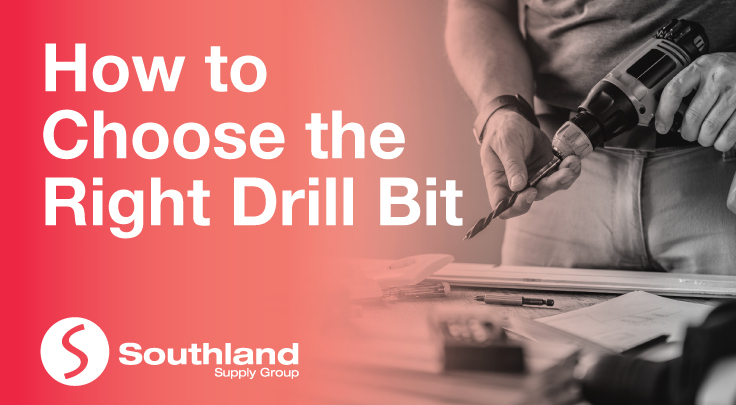
Selecting the right drill bits depends on several factors, including whether you are working with concrete metal, wood, or steel. Using the incorrect drill bit for your job can slow down production and pose a threat to the user. Moreover, the frequent replacement of drill bits due to them being not fit for purpose comes at a cost; it leads to loss of time, energy, and money.
Figuring out which drill bit to use for your project can be tricky – and sometimes best left to the experts. Use the guide below to help you decide whether you’ll DIY or get a professional to help. The main criteria to consider when choosing your drill are as follows:
- Drill bit material: HSS or tungsten carbide
- The fit: will depend on the machine used.
- Diameter
- Drill bit type: twist, step, reamer, center, conical, insert
- Drill bit coating
- Bit angle
- Bit length (short or long)
Choosing Drill Bits by Type
Drill bits are first organised according to the material on which they can be used. You will generally find bits clearly labelled for use on wood, masonry or metal.
Wood Drill Bits: These can be identified by a small, pointed tip at the very end. When you look closely, you can see spurs on each side. These grab the wood and carve it away. The wood drill bit is the most versatile and commonly used bit.
Masonry Drill Bits: These types of bits have a gently sloping tip. Sometimes, the tip of masonry bits is coated in carbide, which prolongs their sharpness. Masonry bits work best with stone and cinder block, and they can work with some tiles as well.
Metal Drill Bits: These drill bits type features a wide-angled point at the end. If you are looking for new metal drill bits, look for ones labeled high speed steel (HSS) bits as these bits are highly versatile.
Choosing Drill Bits by Size
Drill bits come with pilot hole charts that will help you identify the right bit for the job. These charts are based on the shank of the screw and are meant to be used only as guidelines:
- Use a bit .5mm smaller than the target hole size for softwoods.
- Use a bit the same size as the hole when working on other materials.
- If you’re not sure which to select, choose a drill bit .5mm larger than the hole you wish to create. This will account for variables such wood density and screw type.
Knowing how to choose the right drill bit takes practice. Make sure to refer to your pilot hole charts before making your selection. It is also worth trying to keep your drill bits organised in a storage case. This will make selecting the right size easier and more intuitive.
Southland Supply Group is here to assist if you need a hand in choosing the right drill bit for your project. Don't hesitate to give us a call to start a discussion. You may also browse our range of extensive products at https://www.southland.com.au/




